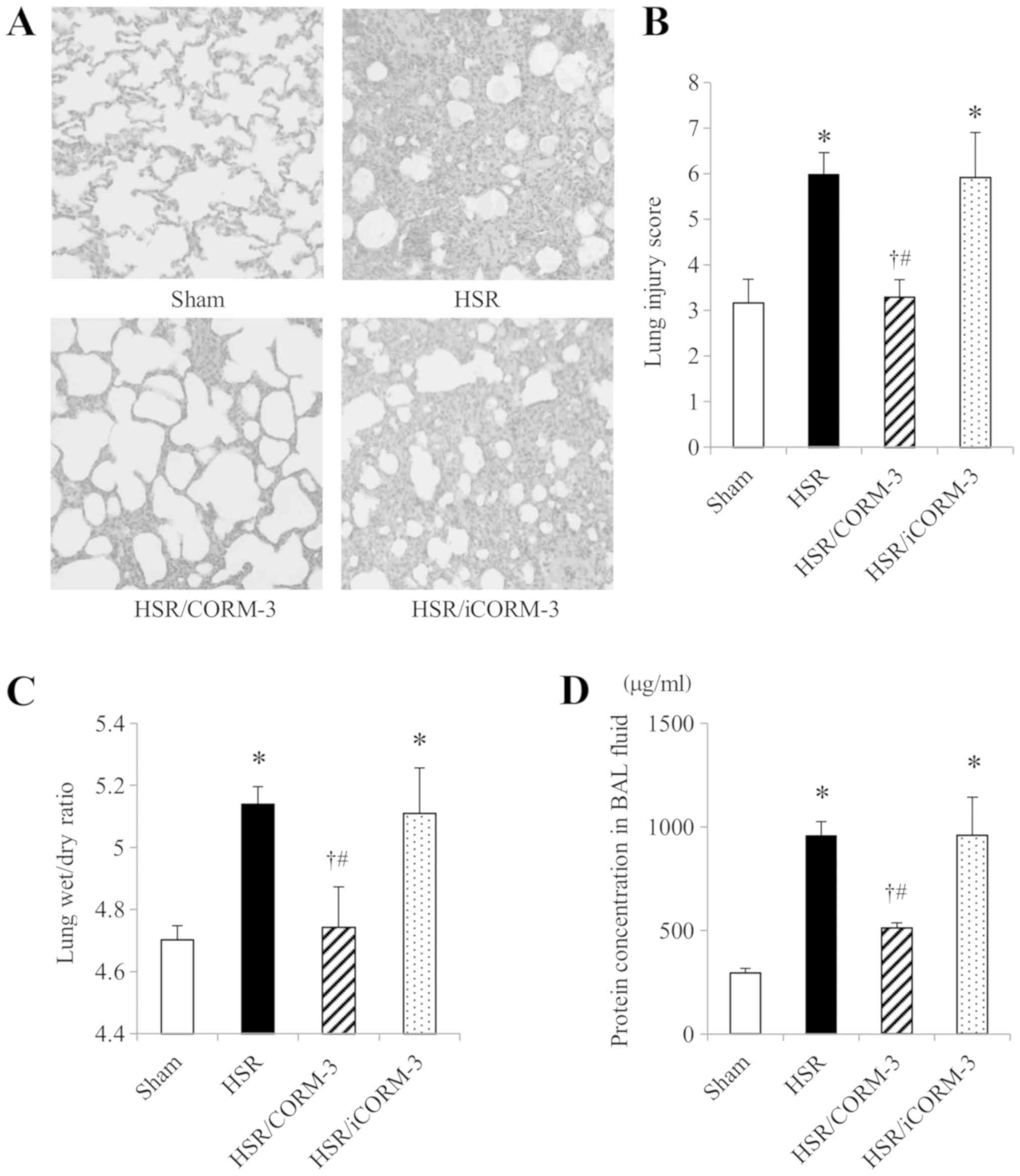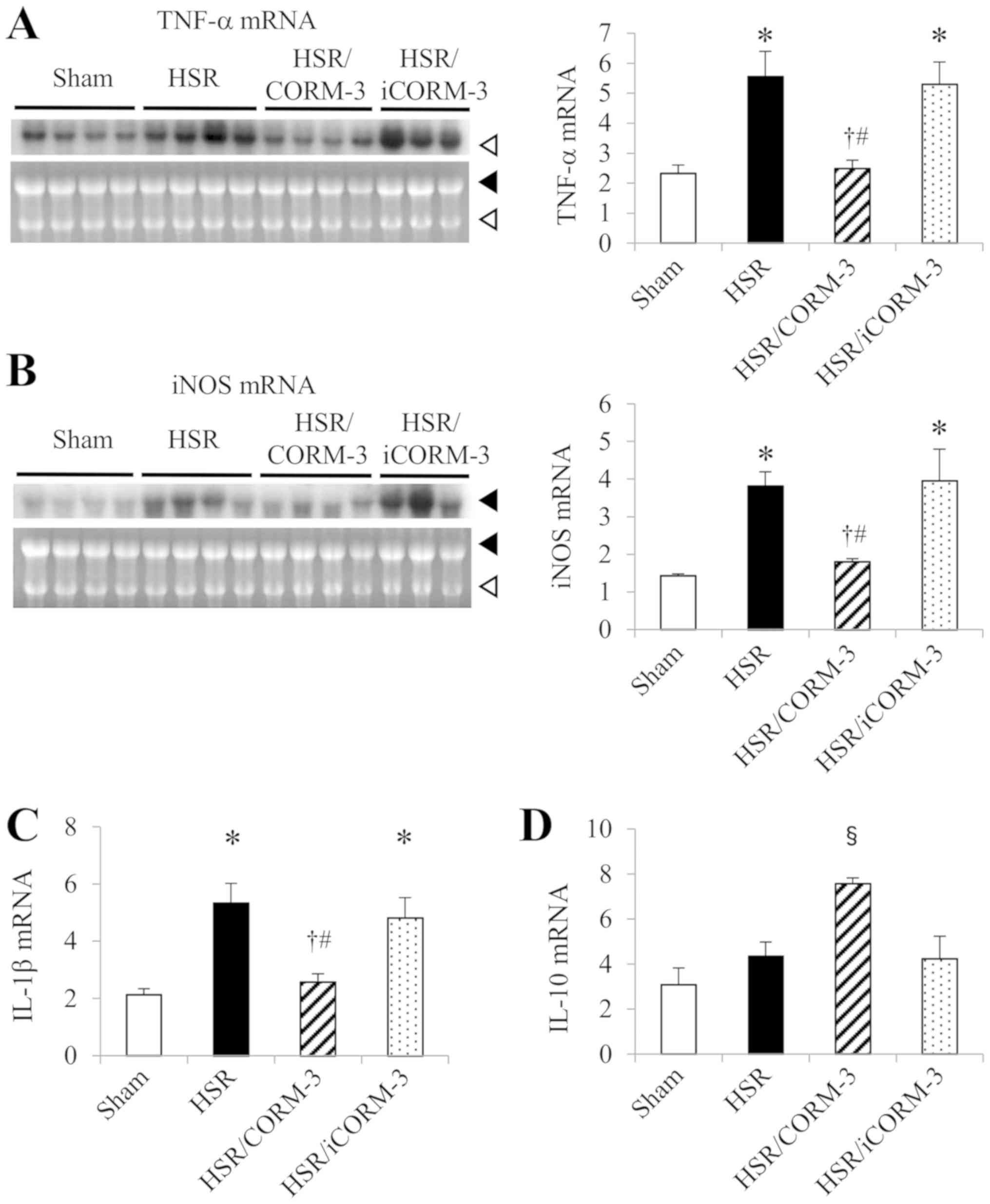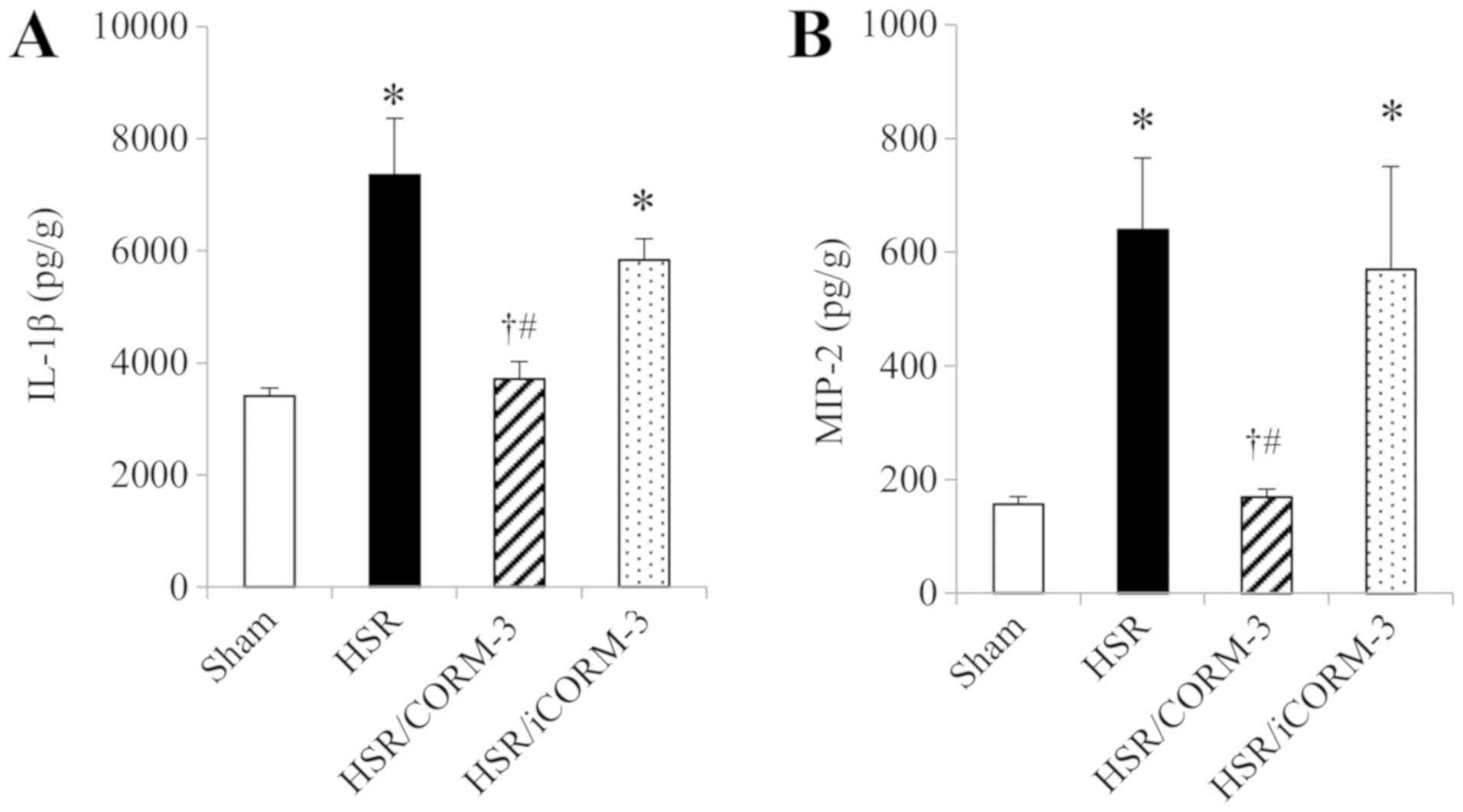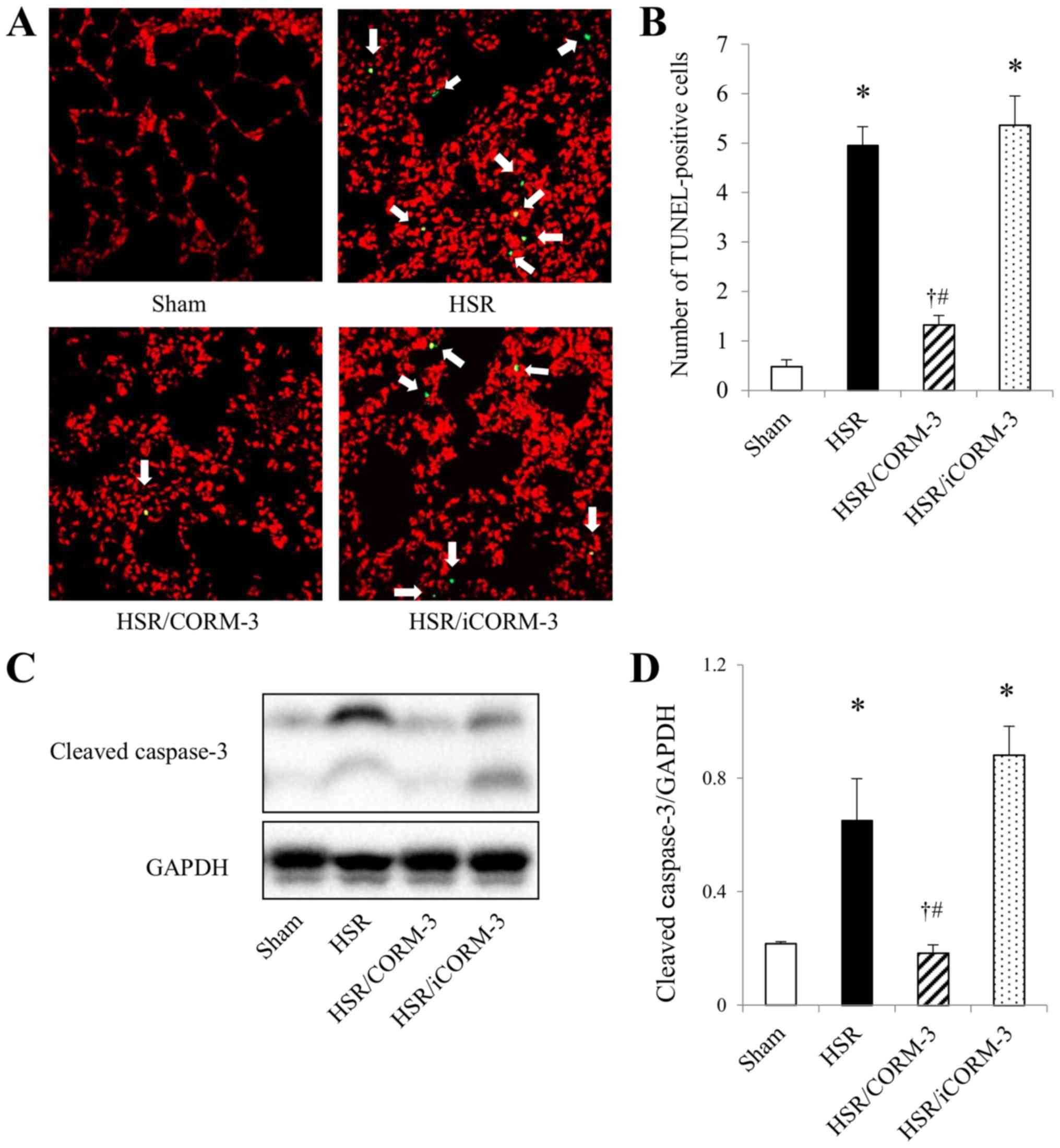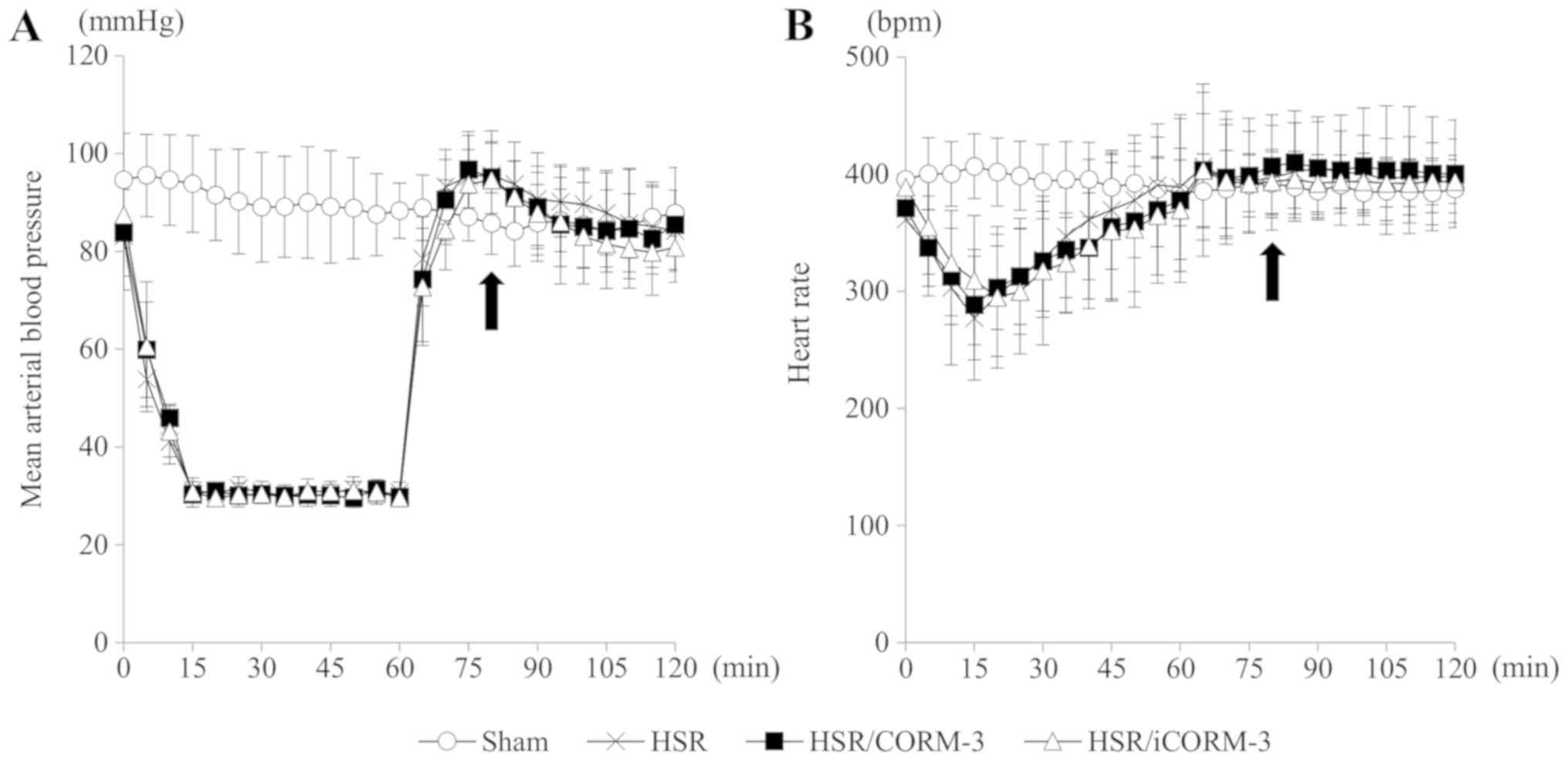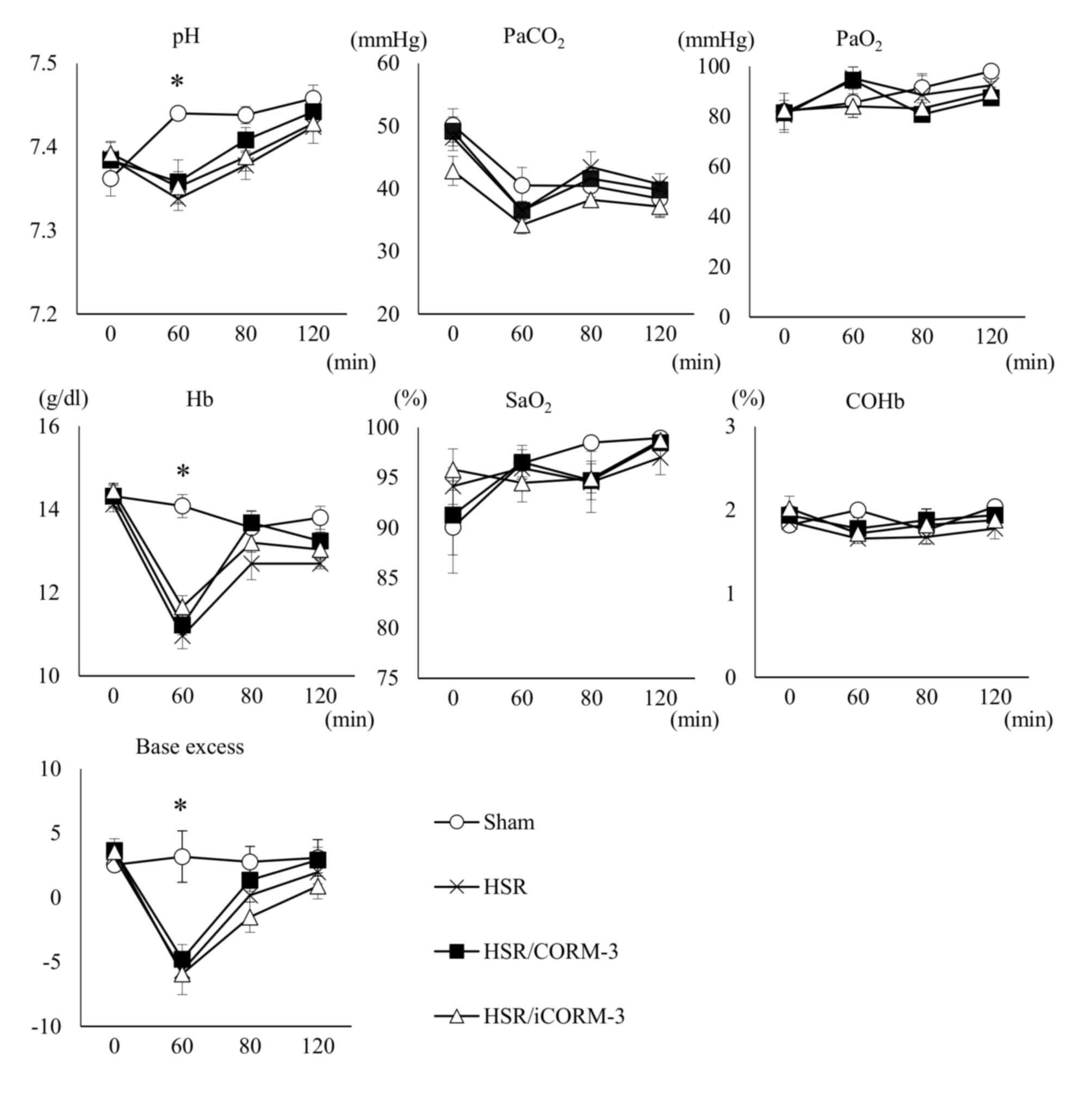|
1
|
Dewar D, Moore FA, Moore EE and Balogh Z:
Postinjury multiple organ failure. Injury. 40:912–918. 2009.
View Article : Google Scholar : PubMed/NCBI
|
|
2
|
Ciesla DJ, Moore EE, Johnson JL, Cothren
CC, Banerjee A, Burch JM and Sauaia A: Decreased progression of
postinjury lung dysfunction to the acute respiratory distress
syndrome and multiple organ failure. Surgery. 140:640–648. 2006.
View Article : Google Scholar : PubMed/NCBI
|
|
3
|
Ware LB: Pathophysiology of acute lung
injury and the acute respiratory distress syndrome. Semin Respir
Crit Care Med. 27:337–349. 2006. View Article : Google Scholar : PubMed/NCBI
|
|
4
|
ARDS Definition Task Force, ; Ranieri VM,
Rubenfeld GD, Thompson BT, Ferguson ND, Caldwell E, Fan E,
Camporota L and Slutsky AS: Acute respiratory distress syndrome:
The berlin definition. JAMA. 307:2526–2533. 2012.PubMed/NCBI
|
|
5
|
Acute Respiratory Distress Syndrome
Network, ; Brower RG, Matthay MA, Morris A, Schoenfeld D, Thompson
BT and Wheeler A: Ventilation with lower tidal volumes as compared
with traditional tidal volumes for acute lung injury and the acute
respiratory distress syndrome. N Engl J Med. 342:1301–1308. 2000.
View Article : Google Scholar : PubMed/NCBI
|
|
6
|
Tonelli AR, Zein J, Adams J and Ioannidis
JP: Effects of interventions on survival in acute respiratory
distress syndrome: An umbrella review of 159 published randomized
trials and 29 meta-analyses. Intensive Care Med. 40:769–787. 2014.
View Article : Google Scholar : PubMed/NCBI
|
|
7
|
Adhikari N, Burns KE and Meade MO:
Pharmacologic therapies for adults with acute lung injury and acute
respiratory distress syndrome. Cochrane Database Syst Rev.
CD0044772004.PubMed/NCBI
|
|
8
|
Peter JV, John P, Graham PL, Moran JL,
George IA and Bersten A: Corticosteroids in the prevention and
treatment of acute respiratory distress syndrome (ARDS) in adults:
Meta-analysis. BMJ. 336:1006–1009. 2008. View Article : Google Scholar : PubMed/NCBI
|
|
9
|
Rose JJ, Wang L, Xu Q, McTiernan CF, Shiva
S, Tejero J and Gladwin MT: Carbon monoxide poisoning:
Pathogenesis, management, and future directions of therapy. Am J
Respir Crit Care Med. 195:596–606. 2017. View Article : Google Scholar : PubMed/NCBI
|
|
10
|
Gullotta F, di Masi A, Coletta M and
Ascenzi P: CO metabolism, sensing, and signaling. Biofactors.
38:1–13. 2012. View
Article : Google Scholar : PubMed/NCBI
|
|
11
|
Bilban M, Haschemi A, Wegiel B, Chin BY,
Wagner O and Otterbein LE: Heme oxygenase and carbon monoxide
initiate homeostatic signaling. J Mol Med (Berl). 86:267–279. 2008.
View Article : Google Scholar : PubMed/NCBI
|
|
12
|
Takahashi T, Shimizu H, Morimatsu H,
Maeshima K, Inoue K, Akagi R, Matsumi M, Katayama H and Morita K:
Heme oxygenase-1 is an essential cytoprotective component in
oxidative tissue injury induced by hemorrhagic shock. J Clin
Biochem Nutr. 44:28–40. 2009. View Article : Google Scholar : PubMed/NCBI
|
|
13
|
Otterbein LE, Mantell LL and Choi AM:
Carbon monoxide provides protection against hyperoxic lung injury.
Am J Physiol. 276:L688–L694. 1999.PubMed/NCBI
|
|
14
|
Sarady JK, Zuckerbraun BS, Bilban M,
Wagner O, Usheva A, Liu F, Ifedigbo E, Zamora R, Choi AM and
Otterbein LE: Carbon monoxide protection against endotoxic shock
involves reciprocal effects on iNOS in the lung and liver. FASEB J.
18:854–856. 2004. View Article : Google Scholar : PubMed/NCBI
|
|
15
|
Song R, Kubo M, Morse D, Zhou Z, Zhang X,
Dauber JH, Fabisiak J, Alber SM, Watkins SC, Zuckerbraun BS, et al:
Carbon monoxide induces cytoprotection in rat orthotopic lung
transplantation via anti-inflammatory and anti-apoptotic effects.
Am J Pathol. 163:231–242. 2003. View Article : Google Scholar : PubMed/NCBI
|
|
16
|
Zhang X, Shan P, Otterbein LE, Alam J,
Flavell RA, Davis RJ, Choi AM and Lee PJ: Carbon monoxide
inhibition of apoptosis during ischemia-reperfusion lung injury is
dependent on the p38 mitogen-activated protein kinase pathway and
involves caspase 3. J Biol Chem. 278:1248–1258. 2003. View Article : Google Scholar : PubMed/NCBI
|
|
17
|
Zuckerbraun BS, Mccloskey CA, Gallo D, Liu
F, Ifedigbo E, Otterbein LE and Billiar TR: Carbon monoxide
prevents multiple organ injury in a model of hemorrhagic shock and
resuscitation. Shock. 23:527–532. 2005.PubMed/NCBI
|
|
18
|
Kawanishi S, Takahashi T, Morimatsu H,
Shimizu H, Omori E, Sato K, Matsumi M, Maeda S, Nakao A and Morita
K: Inhalation of carbon monoxide following resuscitation
ameliorates hemorrhagic shock-induced lung injury. Mol Med Rep.
7:3–10. 2013. View Article : Google Scholar : PubMed/NCBI
|
|
19
|
Kanagawa F, Takahashi T, Inoue K, Shimizu
H, Omori E, Morimatsu H, Maeda S, Katayama H, Nakao A and Morita K:
Protective effect of carbon monoxide inhalation on lung injury
after hemorrhagic shock/resuscitation in rats. J Trauma.
69:185–194. 2010. View Article : Google Scholar : PubMed/NCBI
|
|
20
|
Gorman D, Drewry A, Huang YL and Sames C:
The clinical toxicology of carbon monoxide. Toxicology. 187:25–38.
2003. View Article : Google Scholar : PubMed/NCBI
|
|
21
|
Motterlini R, Clark JE, Foresti R,
Sarathchandra P, Mann BE and Green CJ: Carbon monoxide-releasing
molecules: Characterization of biochemical and vascular activities.
Circ Res. 90:e17–e24. 2002. View Article : Google Scholar : PubMed/NCBI
|
|
22
|
Motterlini R, Mann BE, Johnson TR, Clark
JE, Foresti R and Green CJ: Bioactivity and pharmacological actions
of carbon monoxide-releasing molecules. Curr Pharm Des.
9:2525–2539. 2003. View Article : Google Scholar : PubMed/NCBI
|
|
23
|
Motterlini R and Otterbein LE: The
therapeutic potential of carbon monoxide. Nat Rev Drug Discov.
9:728–743. 2010. View Article : Google Scholar : PubMed/NCBI
|
|
24
|
Motterlini R: Carbon monoxide-releasing
molecules (CO-RMs): Vasodilatory, anti-ischaemic and
anti-inflammatory activities. Biochem Soc Trans. 35:1142–1146.
2007. View Article : Google Scholar : PubMed/NCBI
|
|
25
|
Foresti R, Bani-Hani MG and Motterlini R:
Use of carbon monoxide as a therapeutic agent: Promises and
challenges. Intensive Care Med. 34:649–658. 2008. View Article : Google Scholar : PubMed/NCBI
|
|
26
|
Guo Y, Stein AB, Wu WJ, Tan W, Zhu X, Li
QH, Dawn B, Motterlini R and Bolli R: Administration of a
CO-releasing molecule at the time of reperfusion reduces infarct
size in vivo. Am J Physiol Heart Circ Physiol. 286:H1649–H1653.
2004. View Article : Google Scholar : PubMed/NCBI
|
|
27
|
De Backer O, Elinck E, Blanckaert B,
Leybaert L, Motterlini R and Lefebvre RA: Water-soluble
CO-releasing molecules reduce the development of postoperative
ileus via modulation of MAPK/HO-1 signalling and reduction of
oxidative stress. Gut. 58:347–356. 2009. View Article : Google Scholar : PubMed/NCBI
|
|
28
|
Fredenburgh LE, Kraft BD, Hess DR, Harris
RS, Wolf MA, Suliman HB, Roggli VL, Davies JD, Winkler T, Stenzler
A, et al: Effects of inhaled CO administration on acute lung injury
in baboons with pneumococcal pneumonia. Am J Physiol Lung Cell Mol
Physiol. 309:L834–L846. 2015.PubMed/NCBI
|
|
29
|
Nassour I, Kautza B, Rubin M, Escobar D,
Luciano J, Loughran P, Gomez H, Scott J, Gallo D, Brumfield J, et
al: Carbon monoxide protects against hemorrhagic shock and
resuscitation-induced microcirculatory injury and tissue injury.
Shock. 43:166–171. 2015. View Article : Google Scholar : PubMed/NCBI
|
|
30
|
Kilkenny C, Browne WJ, Cuthill IC, Emerson
M and Altman DG: Improving bioscience research reporting: The
ARRIVE guidelines for reporting animal research. Osteoarthritis
Cartilage. 20:256–260. 2012. View Article : Google Scholar : PubMed/NCBI
|
|
31
|
American Veterinary Medical Association:
AVMA guidelines for the euthanasia of animals: 2013 edition.
https://www.avma.org/KB/Policies/Documents/euthanasia.pdfAugust
4–2018
|
|
32
|
Foresti R, Hammad J, Clark JE, Johnson TR,
Mann BE, Friebe A, Green CJ and Motterlini R: Vasoactive properties
of CORM-3, a novel water-soluble carbon monoxide-releasing
molecule. Br J Pharmacol. 142:453–460. 2004. View Article : Google Scholar : PubMed/NCBI
|
|
33
|
Inoue K, Takahashi T, Uehara K, Shimuzu H,
Ido K, Morimatsu H, Omori E, Katayama H, Akagi R and Morita K:
Protective role of heme oxygenase 1 in the intestinal tissue injury
in hemorrhagic shock in rats. Shock. 29:252–261. 2008. View Article : Google Scholar : PubMed/NCBI
|
|
34
|
Maeshima K, Takahashi T, Uehara K, Shimizu
H, Omori E, Yokoyama M, Tani T, Akagi R and Morita K: Prevention of
hemorrhagic shock-induced lung injury by heme arginate treatment in
rats. Biochem Pharmacol. 69:1667–1680. 2005. View Article : Google Scholar : PubMed/NCBI
|
|
35
|
Murakami K, McGuire R, Cox RA, Jodoin JM,
Bjertnaes LJ, Katahira J, Traber LD, Schmalstieg FC, Hawkins HK,
Herndon DN and Traber DL: Heparin nebulization attenuates acute
lung injury in sepsis following smoke inhalation in sheep. Shock.
18:236–241. 2002. View Article : Google Scholar : PubMed/NCBI
|
|
36
|
Zegdi R, Fabre O, Cambillau M, Fornès P,
Tazi KA, Shen M, Hervé P, Carpentier A and Fabiani JN: Exhaled
nitric oxide and acute lung injury in a rat model of extracorporeal
circulation. Shock. 20:569–574. 2003. View Article : Google Scholar : PubMed/NCBI
|
|
37
|
Jiang H, Meng F, Li W, Tong L, Qiao H and
Sun X: Splenectomy ameliorates acute multiple organ damage induced
by liver warm ischemia reperfusion in rats. Surgery. 141:32–40.
2007. View Article : Google Scholar : PubMed/NCBI
|
|
38
|
Stephens KE, Ishizaka A, Larrick JW and
Raffin TA: Tumor necrosis factor causes increased pulmonary
permeability and edema. Comparison to septic acute lung injury. Am
Rev Respir Dis. 137:1364–1370. 1988. View Article : Google Scholar : PubMed/NCBI
|
|
39
|
Wohlauer M, Moore EE, Silliman CC, Fragoso
M, Gamboni F, Harr J, Accurso F, Wright F, Haenel J, Fullerton D
and Banerjee A: Nebulized hypertonic saline attenuates acute lung
injury following trauma and hemorrhagic shock via inhibition of
matrix metalloproteinase-13. Crit Care Med. 40:2647–2653. 2012.
View Article : Google Scholar : PubMed/NCBI
|
|
40
|
Kosaka J, Morimatsu H, Takahashi T,
Shimizu H, Kawanishi S, Omori E, Endo Y, Tamaki N, Morita M and
Morita K: Effects of biliverdin administration on acute lung injury
induced by hemorrhagic shock and resuscitation in rats. PLoS One.
8:e636062013. View Article : Google Scholar : PubMed/NCBI
|
|
41
|
Nakahira K, Takahashi T, Shimizu H,
Maeshima K, Uehara K, Fujii H, Nakatsuka H, Yokoyama M, Akagi R and
Morita K: Protective role of heme oxygenase-1 induction in carbon
tetrachloride-induced hepatotoxicity. Biochem Pharmacol.
66:1091–1105. 2003. View Article : Google Scholar : PubMed/NCBI
|
|
42
|
Umeda K, Takahashi T, Inoue K, Shimizu H,
Maeda S, Morimatsu H, Omori E, Akagi R, Katayama H and Morita K:
Prevention of hemorrhagic shock-induced intestinal tissue injury by
glutamine via heme oxygenase-1 induction. Shock. 31:40–49. 2009.
View Article : Google Scholar : PubMed/NCBI
|
|
43
|
Kurimoto E, Miyahara N, Kanehiro A, Waseda
K, Taniguchi A, Ikeda G, Koga H, Nishimori H, Tanimoto Y, Kataoka
M, et al: IL-17A is essential to the development of
elastase-induced pulmonary inflammation and emphysema in mice.
Respir Res. 14:52013. View Article : Google Scholar : PubMed/NCBI
|
|
44
|
Yamaoka M, Shimizu H, Takahashi T, Omori E
and Morimatsu H: Dynamic changes in Bach1 expression in the kidney
of rhabdomyolysis-associated acute kidney injury. PLoS One.
12:e01809342017. View Article : Google Scholar : PubMed/NCBI
|
|
45
|
Rushing GD and Britt LD: Reperfusion
injury after hemorrhage: A collective review. Ann Surg.
247:929–937. 2008. View Article : Google Scholar : PubMed/NCBI
|
|
46
|
Alshehri A, Bourguignon MP, Clavreul N,
Badier-Commander C, Gosgnach W, Simonet S, Vayssettes-Courchay C,
Cordi A, Fabiani JN, Verbeuren TJ and Félétou M: Mechanisms of the
vasorelaxing effects of CORM-3, a water-soluble carbon
monoxide-releasing molecule: Interactions with eNOS. Naunyn
Schmiedebergs Arch Pharmacol. 386:185–196. 2013. View Article : Google Scholar : PubMed/NCBI
|
|
47
|
Shimzu K, Takahashi T, Iwasaki T, Shimizu
H, Inoue K, Morimatsu H, Omori E, Matsumi M, Akagi R and Morita K:
Hemin treatment abrogates monocrotaline-induced pulmonary
hypertension. Med Chem. 4:572–576. 2008. View Article : Google Scholar : PubMed/NCBI
|
|
48
|
Tamion F, Richard V, Bonmarchand G, Leroy
J, Lebreton J and Thuillez C: Induction of heme-oxygenase-1
prevents the systemic responses to hemorrhagic shock. Am J Respir
Crit Care Med. 164:1933–1938. 2001. View Article : Google Scholar : PubMed/NCBI
|
|
49
|
Otterbein LE, Otterbein SL, Ifedigbo E,
Liu F, Morse DE, Fearns C, Ulevitch RJ, Knickelbein R, Flavell RA
and Choi AM: MKK3 mitogen-activated protein kinase pathway mediates
carbon monoxide-induced protection against oxidant-induced lung
injury. Am J Pathol. 163:2555–2563. 2003. View Article : Google Scholar : PubMed/NCBI
|
|
50
|
Zhang X, Shan P, Alam J, Fu X and Lee PJ:
Carbon monoxide differentially modulates STAT1 and STAT3 and
inhibits apoptosis via a phosphatidylinositol 3-kinase/Akt and p38
kinase-dependent STAT3 pathway during anoxia-reoxygenation injury.
J Biol Chem. 280:8714–8721. 2005. View Article : Google Scholar : PubMed/NCBI
|
|
51
|
Dolinay T, Szilasi M, Liu M and Choi AM:
Inhaled carbon monoxide confers antiinflammatory effects against
ventilator-induced lung injury. Am J Respir Crit Care Med.
170:613–620. 2004. View Article : Google Scholar : PubMed/NCBI
|
|
52
|
Koulouras VP, Li R, Chen L and
Hedenstierna GG: Effects of inhaled carbon monoxide and
glucocorticoids in porcine endotoxin sepsis. Int J Clin Exp Med.
4:53–66. 2011.PubMed/NCBI
|
|
53
|
Jung SS, Moon JS, Xu JF, Ifedigbo E, Ryter
SW, Choi AM and Nakahira K: Carbon monoxide negatively regulates
NLRP3 inflammasome activation in macrophages. Am J Physiol Lung
Cell Mol Physiol. 308:L1058–L1067. 2015. View Article : Google Scholar : PubMed/NCBI
|
|
54
|
Kim SK, Joe Y, Chen Y, Ryu J, Lee JH, Cho
GJ, Ryter SW and Chung HT: Carbon monoxide decreases interleukin-1β
levels in the lung through the induction of pyrin. Cell Mol
Immunol. 14:349–359. 2017. View Article : Google Scholar : PubMed/NCBI
|
|
55
|
Queiroga CS, Almeida AS and Vieira HL:
Carbon monoxide targeting mitochondria. Biochem Res Int.
2012:7498452012. View Article : Google Scholar : PubMed/NCBI
|
|
56
|
Gomez H, Kautza B, Escobar D, Nassour I,
Luciano J, Botero AM, Gordon L, Martinez S, Holder A, Ogundele O,
et al: Inhaled carbon monoxide protects against the development of
shock and mitochondrial injury following hemorrhage and
resuscitation. PLoS One. 10:e01350322015. View Article : Google Scholar : PubMed/NCBI
|
|
57
|
Sun B, Sun H, Liu C, Shen J, Chen Z and
Chen X: Role of CO-releasing molecules liberated CO in attenuating
leukocytes sequestration and inflammatory responses in the lung of
thermally injured mice. J Surg Res. 139:128–135. 2007. View Article : Google Scholar : PubMed/NCBI
|
|
58
|
Qin W, Zhang J, Lv W, Wang X and Sun B:
Effect of carbon monoxide-releasing molecules II-liberated CO on
suppressing inflammatory response in sepsis by interfering with
nuclear factor kappa B activation. PLoS One. 8:e758402013.
View Article : Google Scholar : PubMed/NCBI
|
|
59
|
Taylor BS and Geller DA: Molecular
regulation of the human inducible nitric oxide synthase (iNOS)
gene. Shock. 13:413–424. 2000. View Article : Google Scholar : PubMed/NCBI
|
|
60
|
Tayem Y, Johnson TR, Mann BE, Green CJ and
Motterlini R: Protection against cisplatin-induced nephrotoxicity
by a carbon monoxide-releasing molecule. Am J Physiol Renal
Physiol. 290:F789–F794. 2006. View Article : Google Scholar : PubMed/NCBI
|















